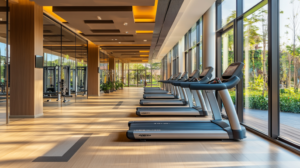Prioritising health and safety on construction sites is a cornerstone of effective building project management in the UK. Given the industry’s unique challenges and the inherently high-risk nature of its activities, strict adherence to comprehensive health and safety regulations is essential. This commitment safeguards workers’ well-being, ensures legal compliance, and promotes a culture of responsibility and care.
From my perspective, the regulations are not just about compliance but about fostering a safety culture that protects workers and prevents accidents. This culture is further supported by professional qualifications such as the Construction NVQ, which plays a crucial role in embedding safety practices and enhancing industry standards. It ensures that professionals are aware of regulatory requirements and equipped with practical skills and knowledge to implement them effectively on-site. Here, we outline the key regulations that govern health and safety in the UK construction industry.
1. The Health and Safety at Work Act 1974
The cornerstone of UK health and safety law, the Health and Safety at Work Act (HSWA), mandates that employers ensure all employees’ health, safety, and welfare as reasonably practicable. This includes providing a safe working environment, adequate training, and necessary safety equipment. The Act also places a duty on employees to take reasonable care of their health and safety and that of others affected by their actions.
2. The Management of Health and Safety at Work Regulations 1999
These regulations complement the HSWA by requiring employers to conduct risk assessments and implement measures to manage those risks. This involves identifying potential hazards, evaluating their associated risks, and implementing appropriate control measures. Employers must also prepare a written health and safety policy if they have five or more employees and ensure that staff are adequately trained in health and safety procedures.
3. The Construction (Design and Management) Regulations 2015 (CDM 2015)
The CDM Regulations are specifically tailored for the construction industry and aim to improve health and safety throughout the project lifecycle. They outline the responsibilities of clients, designers, and contractors and require a Construction Phase Plan (CPP) to be developed. This plan must detail the health and safety measures to be implemented on-site, ensuring that risks are managed from the design stage to project completion.
4. The Control of Substances Hazardous to Health Regulations 2002 (COSHH)
COSHH regulations require that employers assess and control the risks associated with hazardous substances used in construction. This includes ensuring proper storage, handling, and disposal of chemicals and providing appropriate personal protective equipment (PPE) to workers. Employers must also offer training on the safe use of these substances.
5. The Provision and Use of Work Equipment Regulations 1998 (PUWER)
PUWER ensures that work equipment provided to employees is safe and properly maintained. This includes regular inspections, maintenance, and the provision of adequate training. Employers must also ensure that equipment is suitable for the intended tasks and that safety features are in place to prevent accidents.
6. The Working at Height Regulations 2005
Working at height is a common activity in construction, and these regulations are designed to prevent falls, which are a leading cause of injuries in the industry. Employers must ensure that work at height is properly planned, supervised, and carried out safely. This involves using appropriate fall protection systems, such as guardrails or safety harnesses, and ensuring that all personnel are trained in working at height.
7. The Lifting Operations and Lifting Equipment Regulations 1998 (LOLER)
LOLER governs the safe use of lifting equipment and requires that such equipment is fit for purpose, regularly inspected, and properly maintained. Employers must also ensure that lifting operations are planned and supervised by competent personnel to prevent accidents and injuries.
8. The Personal Protective Equipment at Work Regulations 1992
These regulations require employers to provide suitable PPE to employees where risks cannot be adequately controlled by other means. The PPE must be appropriate for the specific hazards and properly maintained. Employees must be trained in using and caring for PPE, and its provision is a crucial part of ensuring a safe working environment.
From an expert’s viewpoint, adhering to these regulations is crucial not only for safeguarding the well-being of workers but also for promoting a culture of safety that enhances productivity, reduces accidents, and minimises legal and financial risks. This commitment ultimately leads to the sustained success of the project, safeguarding both human capital and the organisation’s reputation.





